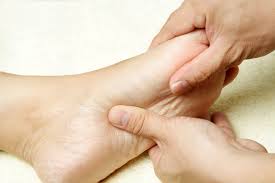Orthotics
Orthotics “Do I need Them?”One of the most common questions I get asked by people. Not everyone needs orthotics as sometimes choosing the correct shoe does the job, it all depends on the following factors (but is not limited to)
1. Foot Mechanics
People often use the term “flat feet” to describe the motion that is actually “pronation” or when the feet  roll inwards, but this is a misleading phrase as high arch feet can be pronated. Pronation is a necessary and normal part of gait required for shock absorption. Problems tend to arise when people excessively pronate.
roll inwards, but this is a misleading phrase as high arch feet can be pronated. Pronation is a necessary and normal part of gait required for shock absorption. Problems tend to arise when people excessively pronate.
Supination is the opposite of pronation, when the feet roll outwards. Supination is also a necessary and normal part of gait required so that the feet can become rigid levers to propel the body forward. Excessively supinated feet tend to be quite poor at absorbing shock which means they are not ideally suited to prolonged high impact activity.
The following video links show various foot mechanics. When viewing these compare them to a wheel alignment on a car or a foundation on a building, ie; they should be aligned vertically and be a stable foundation for the structure above.
Ideal foot mechanics. Note the alignment of the foot relative to the shin.
Whereas this high arched foot is excessively supinated.
2. Body Types
The height, shape, mass, alignment, flexibility, etc. of each person’s body all play a part in the suitability for high impact weight bearing activity such as running. Further to this, some people have hyper-flexible ligaments which means their joints often move past an ideal range, which in the feet means an unstable foundation (think of wobbly front wheels on your car ….). Typically, hyper-flexible people take to orthotics like a duck to water as the excessive motion of their feet is then minimised. An interesting fact is that bodies are rarely symmetrical, which can mean that legs are different lengths. Treatment via a heel lift or orthotics all depends on the level of the difference.
3. Age
You may not like to read it, but it’s true that we all wear out at some point and for a lot of people it starts to occur in their 30s to 40s. How many professional athletes continue past their early to mid 30s? Not many, because the older we get, the less supple our muscle and tendons become and our joints can potentially have signs of the dreaded osteoarthritis. So, the older we get, the less our body copes with misalignments to wear & tear. Again, back to the car – if you ignore a poor wheel alignment in an older model car and keep driving that car, worn tyres will be the least of your problems given enough time.
4. Aches & Pains
Quite simply, if you have aches & pains every time you stand, walk or run, something must be wrong with the way you stand, walk or run. It may be that the injuries from times gone by are coming back to haunt you, but they don’t necessarily have to cause so much discomfort.
5. Level of Activity
The more high impact weight bearing activity (such as running) that you do, the more you magnify all of the factors mentioned above, especially in the modern, concrete world.
Podiatrists are part of the health care team that specializes in the diagnosis and management of foot disorders & injuries associated with foot and lower limb function.
Stewart Hayes has over 15 years experience as a podiatrist specializing in the area of “Sports Podiatry” (the specialty dealing with biomechanical, sporting & overuse complaints rather than general footcare such as toenails or corns). Stewart has dealt with children, adults, the elderly, workplace injuries, military personnel, social and international level athletes.
Should you be concerned about your or your child’s feet, please feel free to book an appointment with Stewart by calling 02 9389 2766
By Stewart Hayes
